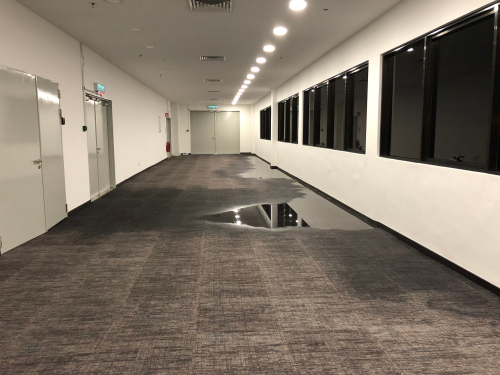- Restoring Every Detail, From Start to Finish
- (801) 263-9990
Flooded Carpet & Drywall – How to Deal With Them at Home

Water Damage – 4 Steps to Take When Confronted With It
September 25, 2020
Water Damage vs. Flood Damage – What’s the Difference?
September 29, 2020How to Deal With Flooded Carpets and Drywall at Home
It’s never pleasant to have water in areas of your home where it shouldn’t be, such as flooded carpet. Flood damage poses numerous health and safety risks, and it gets worse the more you put off fixing it. The earlier you address issues like these, the higher your chances of saving your belongings.
One of the crucial factors here is the amount of time it takes for water to enter your house. Some items—like furniture made of water-resistant material—can be submerged for a few minutes. Others, like electronics, are not as sturdy.
Flooding of enclosed spaces like basements is even more dangerous because they almost always ruin the drywall and carpet. Here are the first things to know when repairing water-damaged rooms.
Replacing a wet carpet
Typically, manufacturers make carpets out of synthetic fibers, which give them a warm and fluffy appearance. However, it is these qualities that make them most susceptible to water damage. Water damage restoration might save your flooded carpets, though only under certain circumstances.
For one, if the floodwater was muddy and the carpet got soaked for a long time, you might need to dispose of it entirely. If the flood was due to a broken pipe or standing water, you could still save it.
Use a water extraction vacuum and remove as much fluid as you can from the flooded carpet. Then, lift it so you can dry it from both sides. Remember that you must remove the padding so you can replace it; keeping the old one would make your carpet more prone to further damage. While you have the floor underneath the rug uncovered, you should also check it for wear or damage.
Replacing wet drywall
Drywall is present in nearly all homes, especially ones constructed recently. Construction companies use drywall to divide spaces into rooms; it is durable and easy to install, making their work efficient. When you accidentally puncture drywall, it only needs a simple repair. However, wet drywall is a different story; this material is porous and absorbs even more water than wood.
When inundated, drywall can sag, bow, and swell, compromising the building’s structural integrity. Wet walls are also a breeding ground for bacteria and mold. As such, it is vital to dry this material as soon as possible for you to rescue it.
Note, though, that soft and distorted drywall would be beyond saving. This type of material reaches a saturation point, after which you can no longer count on its sturdiness. When it comes to drywall water damage, you should consult a restoration company.
Conclusion
It’s not a good idea to minimize the effects of water damage on your home. Do not take flood water lightly; it only takes a small amount of dampness for mold and bacteria to grow on drywall and carpets. This, in turn, could be the source of health issues for your family. After a flood, make sure you act quickly and inspect all your belongings. If you see signs that your space needs repair, contact a specialist immediately.
For flood damage cleanup in Utah, get in touch with AAA Restoration today. We are committed to helping our clients get their lives back to normal. With several years of experience and certifications in mold removal, water damage restoration, and others, you can be sure you’re getting top-quality service from us. Contact us today to learn more.


